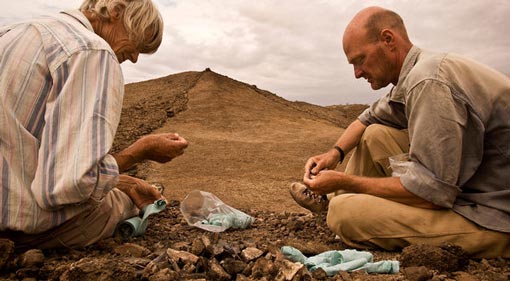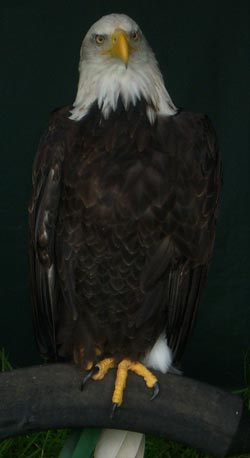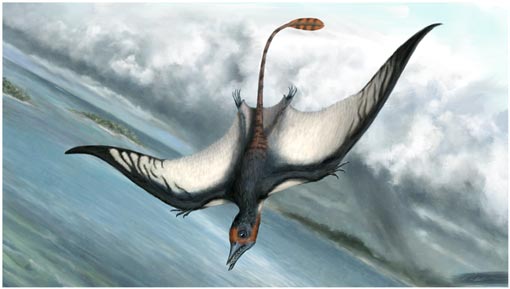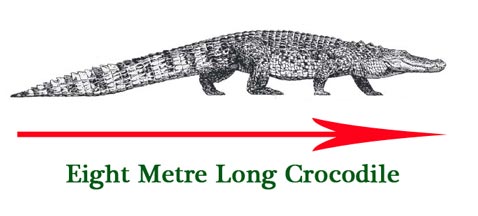Three of a Kind from Lake Turkana
At Least Three species of Hominid Co-Existed in Kenya Two Million Years Ago
Palaeoanthropologists have identified fossil hominid material in eastern Africa (Lake Turkana), that indicates that around two million years ago there were at least three types of human-like creature co-existing. In new research published this week in the academic journal “Nature”, the research team have declared that at least three species from the mankind family tree lived in the same part of the world during the Late Pliocene Epoch. One of these species, Homo erectus was probably part of that branch of the hominid family tree that would eventually lead to the evolution of our own species, H. sapiens. The other two species are believed not to be direct ancestors of more modern humans and they may have become extinct, effectively ending their role in hominid evolution and development.
Scientists Explore the Extensive Sediments around Lake Turkana
Picture credit: Mike Hettwer
Homo erectus
H. erectus, known as “upright man” due to his more human posture and gait was the first widespread human species. For many years, palaeontologists thought that this particular species of early hominid evolved in Asia. Scientists such as Eugene Dubois, a Dutch anatomist and anthropologist, believed that our ancestors evolved in Asia not Africa. In 1889 he led an expedition to what is now known as Indonesia to search for fossil evidence to support his theory. He found elements from a skull and some limb bones and named a new species of hominid Pithecanthropus erectus. Scientists now believe that these bones represent Homo erectus and this hominid, with perhaps a brain size about three quarters the size of our own species, evolved in Africa before migrating eastwards across the Straits of Arabia into Asia and eventually into the islands of the Pacific. With tool making skills and a mastery of fire; this human species was incredibly successful and not only have fossils been found in places many thousands of miles apart, the dates of these fossils show that this species has also persisted the longest in the human evolutionary story. Having evolved approximately 2.2 million years ago, H. erectus survived until at least 250,000 years ago and some scientists believe that the last of this type of human actually went extinct in the very Late Pleistocene Epoch, around 50,000 years ago.
Although the fossil record is far from complete, it seems that H. erectus may have given rise to later types of hominid including the direct, common ancestor of both the Neanderthals (H. neanderthalensis) and our own species.
Lake Turkana
The other two species of early hominid found in the same layers of Lake Turkana sediment represent “evolutionary dead ends” according to the scientists. The fossil discoveries may help to solve a forty year mystery concerning skull material found in the same part of Kenya that has caused considerable debate amongst palaeoanthropologists. The fossil beds around Lake Turkana are referred to as the “cradle of mankind” due to the amount of early Homo fossil specimens that have been found.
Three new hominid fossils, bones that make up part of the face, a near complete upper jaw with cheek teeth and fragments from a lower jaw excavated from a dig site to the east of Lake Turkana, appear to confirm that skull material found in the same area forty years earlier is indeed a separate species of early human.
In 1972, parts of a strange, human-like skull with a flat face was unearthed. Calculations made regarding the size of the brain suggested that this creature had a brain size of around 750 cubic centimetres, much larger than Australopithecines and this evidence convinced many scientists that this was definitely an early member of the human family tree. It was assigned to the species Homo habilis. Scientists had no real idea what the skull of H. habilis looked like, as at the time very little skull material had not been discovered, so here was a convenient way of putting a “face” to an early member of the hominid family. The skull material (KNM-ER 1470, referred to as 1470 for short), caused a great deal of debate amongst researchers. Subsequent fossil finds showed that this skull was different from other material assigned to H. habilis and it was proposed that this skull was a male of the species and the other material represented females. If this was the case, then the size difference between males and females of the species H. habilis was the greatest in all the primates including the modern gorilla. Other scientists assigned this fossil to another species of early human – Homo rudolfensis.
Computer Image Showing Skull 1470 and the New Fossil Discoveries Combined
Picture credit: Fred Spoor
A photographic reconstruction shows the KNM-ER 1470 cranium, discovered in 1972, combined with a new lower jaw KNM-ER 60000; both are thought to belong to the same species. The lower jaw is shown as a photographic reconstruction, and the cranium is based on a computed tomography scan. This is the first image of its kind taken of the “third” Lake Turkana hominid – Homo rudolfensis.
Skull 1470
Working out what the skull known as 1470 represented was proving controversial, no flat-faced skull material from the same sediments had been found and the lack of teeth and jaw bones made identification and placement in the human family tree extremely difficult. However, these three new fossils, excavated in the area between 2007 and 2009 confirm the existence of a third, large-brained hominid that lived alongside H. erectus and H. habilis. All these fossils were found within seven miles of each other and have been dated between 1.78 and 1.95 million years.
The Famous Lake Turkana Skull (KNM-ER 1470)
Commenting on the significance of the new fossil finds, Dr Meave Leakey, co-leader of the Koobi Fora Research Project in Kenya stated:
“For the past 40 years we have looked long and hard in the vast expanse of sediments around Lake Turkana for fossils that confirm the unique features of 1470’s face and show us what its teeth and lower jaw would have looked like. At last we have some answers.”
The bones that make up a flat face (KNM-ER 62000) are very similar to those of KNM-ER 1470, proving that the 1972 fossil discovery was not an over-sized example of a male H. habilis. The beautifully preserved upper jaw with most of its cheek teeth still in situ has made it possible for the research team to infer the type of lower jaw that would have fitted the skull known as 1470.
Co-author of the academic paper and leader of the scientific analysis, Professor Fred Spoor, from University College London (United Kingdom), stated: “Combined, the three new fossils give a much clearer picture of what 1470 looked like. As a result, it is now clear that two species of early Homo lived alongside Homo erectus. The new fossils will greatly help in unravelling how our branch of human evolution first emerged and flourished almost two million years ago.”
These fossil finds indicate that the evolution of our own species was not just a straight forward, linear progression. On the plains of eastern Africa around two million years ago, there seems to have been a number of hominid evolutionary experiments going on with a number of different species co-existing and probably competing with each other for food and other resources. Intense competition may well have acted as an “evolutionary accelerator”, providing a kick start to the evolution and development of our own part of the human family tree. At least three species of hominid lived in this part of the world, H. habilis, H. erectus and H. rudolfensis.
For models and replicas of ancient hominids including H. erectus (whilst stocks last): Wild Safari Ancient Figures and Models.



















